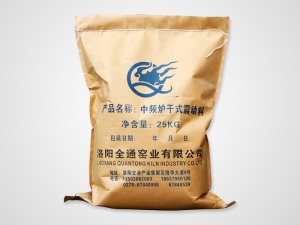Factors Affecting the Effect of Argon Blowing Bricks at the Bottom of Ladle
The quality of use of argon-blown breathable bricks at the bottom of the ladle is very important for steel manufacturers, and the unfavorable factors should be avoided or dealt with as much as possible in the process of use; the factors that affect the effect of argon-blown breathable bricks at the bottom of the ladle include steel infiltration on the working face of the breathable bricks , The ventilation brick (slit type) is blocked by slag, the change of material, the fluctuation of air source pressure, the long stop time and other factors.
The working conditions of the breathable bricks are very harsh. The static pressure of the molten steel in the large ladle is large, and the required stirring intensity is also large. Therefore, the key to ensuring the air permeability is that the breathable bricks must have strong anti-seepage steel ability. In practice, steel is often formed on the working surface of the breathable brick, so it is necessary to clean the working face with an oxygen gun.
After the continuous casting of the ladle, the working surface of the permeable brick is fully in contact with the molten slag, and the molten slag will continue to infiltrate into the permeable brick. As a result, the amount of air blowing at the bottom of the next ladle is small or airtight.
The breathable brick is a multi-phase composite material, and has the structural characteristics of particles, organic matter, interface, pores, etc. The main chemical component contained in the breathable brick is alumina, followed by a certain amount of magnesium oxide. The density, compressive strength, and flexural strength of bricks will vary.
During the actual use of the breathable brick, the argon gas supply pressure will fluctuate for many reasons. When the argon gas pressure is too low, the molten steel cannot be blown, resulting in the failure of bottom blowing; when the argon gas pressure is too large, it is easy to cause the molten steel to turn over. Seriously, after contact with air, the molten steel will be oxidized twice.
When the ladle is stopped for too long, the baking time is insufficient or not baked, the temperature of the ladle lining is not enough. After the steel is connected, the temperature of the molten steel at the bottom of the ladle is low, and the cold steel is knotted at the bottom of the ladle, which hinders the bottom blowing of the ventilation bricks from blowing air, resulting in ventilation fail.

Related News
- Introduction of construction method of ramming material in intermediate frequency furnace
- How to choose the material of furnace lining
- The difference between rammer and castable
- Application direction of intermediate frequency furnace refining
- Introduction to the construction method of dry ramming material
- Do you know the production process and control points of breathable bricks?
- The application of argon blowing technology at the bottom of the intermediate frequency furnace
- Method for prolonging service life of intermediate frequency furnace lining
- In addition to diffused breathable bricks, there are those types of breathable bricks
- What are the advantages of coil cement
- Composition and properties of ramming materials for glass kilns
- Phenomenon analysis of failure of argon blowing of ladle permeable bricks and how to improve the rate of argon blowing
- How to Reduce Inclusions in Steel in Medium Frequency Induction Furnace Smelting
- What are the control points of nickel and cobalt elements in the smelting of medium frequency induction furnace?
- What are the requirements for the production materials of breathable bricks?
- How is the neutral ramming material of the intermediate frequency furnace made?
- Intermediate frequency charge manufacturer: design characteristics of coil cement
- Taking breathable bricks as an example, the basic knowledge of refractory materials is briefly described
- What are the requirements for the production materials of breathable bricks?
- Do you know that it is very important to beat the ramming material of the intermediate frequency furnace?


